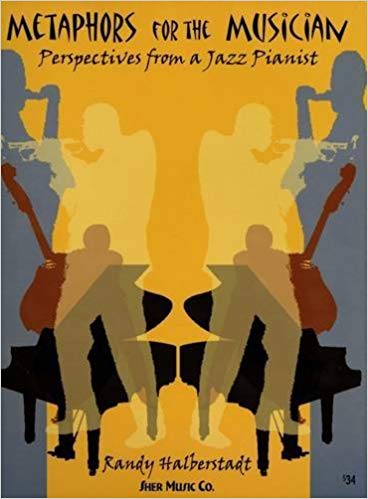How to Easily Learn Jazz Guitar Licks
Aug 03, 2018Avoid This Mistake and Learn Guitar Licks Effortlessly
Hello again! Marc here with another lesson for ya! In this post, I'll be going over what I consider to be the best way to easily learn jazz guitar licks.
If you've been following me for a while or have studied with me, you know I don't really like teaching jazz guitar licks, but I do think it's important to discuss how to make the most of your transcriptions.

The first thing I would like to do here is recommend this book by Randy Halberstadt called "Metaphors for the Musician." I find that this book is very interesting because it is uniquely focused on the learning process itself as opposed to just providing a library of licks.

He's actually a pianist, but I found his book so interesting that it inspired me to make this lesson.
Transcribing is an important part of the learning process for players of all levels. Even some of the most killing and most experienced players I know personally still transcribe fairly regularly.
It's important to note that transcribing doesn't mean you have to learn entire solos. A simple phrase, melodic fragment, chord, etc. might be all you want out of a recording. This is fine!
Download ALL of the licks here: "How to Easily Learn Jazz Guitar Licks"
Join our Community here.
What we are discussing here is how we can take even the tiniest piece of musical information and give it many different uses.
Let's go ahead and get started!
My One Rule
The main point here is that it is a mistake to learn a lick and give it only one use. Instead, I'll show you a lick and show you how it can have eight uses.
Here's a very simple melodic fragment you've probably heard a million times over.

Easy enough, right? Now let me show you how many uses it can have! I am going to show you several chords it fits over nicely.
First, let's see how it lays out over a Cmaj7 chord.

Now check this out. Take the very same lick - same notes and all - and play it over Fmaj9.

Nice, right? In this case, the lick starts on the 9 (G) and it is technically based on F Lydian, although the #11 (B) isn't there.
Speaking of Lydian, here's another example based on the Lydian mode but we're actually going to incorporate the #11.

In this case, the lick starts on the 13 of the chord (G) and goes through the #11 (E) to finally land on the 3rd (D).
How to Do This with Other Licks
One way I like to do this is by analyzing the harmony over which a lick is originally played, then using a process not much different from diatonic chord substitutions.
Let's take a simple lick I believe I transcribed at some point but can't remember it. Maybe I wrote it. I don't know! LOL

Now, originally, let's say this was a jazz guitar lick over a Cmaj7 chord.

Using the diatonic chord substitution method, we can deduce that this lick will also work over Am7. This gives us an Aeolian sound.

Using the same method, we can also apply this to Dm7. This one gives us a classic Dorian sound. It's a good idea to start getting that sound in your ears early on as you will be using it quite often!

Now we have one that is not technically a diatonic sub as Fmaj7 and Cmaj7 only have two notes in common, but they are part of the same key of C. This will give us a nice Lydian sound and it actually works really well.

Final Thoughts
In addition to transcribing and repurposing licks that you enjoy from other players, I would also like to recommend coming up with your own licks based on what you've garnered from your time transcribing.
Download ALL of the licks here: "How to Easily Learn Jazz Guitar Licks"
Join our Community here.
I find that the stuff that comes out organically tends to "stick" more. Transcribing is important, but in my opinion, it's more about learning approaches and concepts than it is about stealing melodic content note for note - although, that will happen sometimes.
And, of course, when you do come up with your own melodic fragments and licks, be sure to take them through these steps and you will find that they'll be much more useful to you in the long run!
Jump In
Now it's your turn to go ahead and try this with some of your favorite licks. See how you can repurpose them and find multiple uses for them! Eventually, you'll notice that the fretboard will open up for you a great deal and you'll be able to access these ideas on the fly in an organic way.
Many times, we hear different players playing jazz guitar licks, and you can tell that some of it feels contrived or forced. This is often the case with people that are trying to force licks into their vocabulary and, by learning this licks way, it will help you to break out of that!
How Licks Can Keep You Out of Trouble - Check out our blog post on how licks can get you out of a tight spot!
Lastly, remember to subscribe to our YouTube channel for more helpful tips and lessons. Share this with your friends and help us spread the word!









